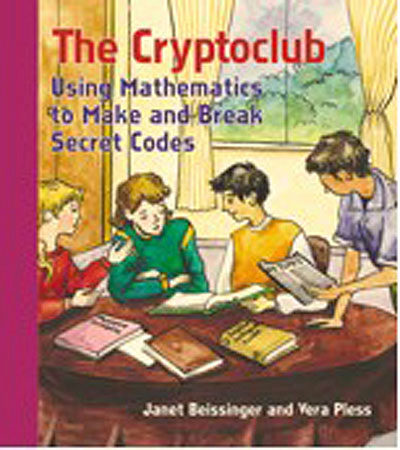Chicago Tribune Features Crytoclub
July 22nd, 2009
Categories: Education, Multimedia, Museums, Software, User Groups

About
Chicago Tribune 07/22/2009
Helping students unlock math’s secrets
Cryptography program sends children the message that solving problems can be fun
By Angie Leventis Lourgos
SPECIAL TO THE TRIBUNE
Julius Caesar is said to have encrypted battle plans in an alphabetical code, protecting the life-or-death messages from spies.
That wouldn’t work today. Middle school students can easily crack the Caesar Cipher, which is part of an innovative lesson in mathematics, critical thinking and problem solving.
A team of University of Illinois at Chicago professors has crafted a math curriculum based on cryptography, the science of making and breaking codes. They were recently awarded a five-year, $2.5 million National Science Foundation grant to turn the lessons into an after school program to be used across the nation.
“There’s always been an attraction to secret codes,” said Janet Beissinger, research associate professor at UIC’s Learning Science Research Institute. “I don’t know if it’s the mystery or the idea that they’re uncovering a secret.”
Children in the 1930s and 1940s used to sit by the radio with their mail-ordered Little Orphan Annie and Captain Midnight decoder pins, eager to solve crime mysteries. Children would get a “Slidomatic Radio Decoder,” another toy that helped unleash their inner spy, from boxes of Quaker Puffed Wheat. Beissinger and fellow UIC professor Vera Pless sought to harness that natural intrigue when they co-wrote “The Cryptoclub,” a 2006 narrative introducing middle school students to mathematical concepts through the encryption and decryption of codes.
As the story unfolds, students use math basics such as addition, subtraction, multiplication, division and factors to create their own codes-as well as crack the codes crafted by their peers.
Some problems are as simple as shifting letters of the alphabet or substituting numbers for letters. Others involve complicated patterns based on exponents or division with remainders.
The book and course material were originally tested in Chicago public schools, as well as schools in Naperville, Oak Park and La Grange. The pilot was later expanded to school districts across the country.
“It’s very good at building risk taking behavior for people who are otherwise a little math-anxious,” said Cathy Kaduk, who has taught math at Maplebrook Elementary School and Ranch View Elementary School, both in Naperville.
Sometimes the hardest part is building confidence in students, she said. Cryptography teaches creativity, trial and error, and flexible thinking, so students aren’t afraid to throw out a failed method and try something new.
The course material also provides a social setting, and children are energized by creating and breaking one another’s codes-immediate gratification for their work.
“You know something they don’t know. And if they figure it out, then you both share a secret,” Kaduk said.
But teachers found there often wasn’t enough time in the school year to teach cryptography, so the UIC professors decided to expand the concept into an after-school program, with the help of the national math literacy group, The Young People’s Project. A chain of student volunteers, formed by college students training high school students, will teach the material to middle school children, the Cryptoclub’s target audience.
The UIC team-which includes experts in mathematics, psychology and electronic visualization - is working on a treasure hunt-style computer game based on the coursework, which will be accessible online. The game will be co-developed by Eduweb, which designs many museum Web sites.
Beissinger said 10 Chicagoland middle school teachers will test the material, and the Museum of Science and Industry intends to use the Cryptoclub program in its network of science clubs.
UIC also plans to host workshops to train after-school leaders from around the country.
Educators say students also are intrigued by the history of cryptography, which has been used to shield messages in virtually every major war.
The Vigenere Cipher, which employs a complicated pattern of shifting, was used in the Civil War and was thought to be unbreakable. Today, 12- to 14-year-olds around the country crack the Vigenere using common factors.
And Navajo code talkers, using a cipher based on their native language, were famous for aiding the Marines at Iwo Jima during World War II.
People now use modern cryptography every time they use a credit card online or an ATM, as the numbers are scrambled to protect their secrecy during transmission.
Beissinger said lessons in code breaking help students realize that math is an evolving field with real-world applications, not just a set of equations scrawled out in a notebook.
“Math isn’t an old subject that’s all figured out,” she said. “There are new things to discover, and they’re important things.”
“There’s always been an attraction to secret codes. I don’t know if it’s the mystery or the idea that they’re uncovering a secret.”